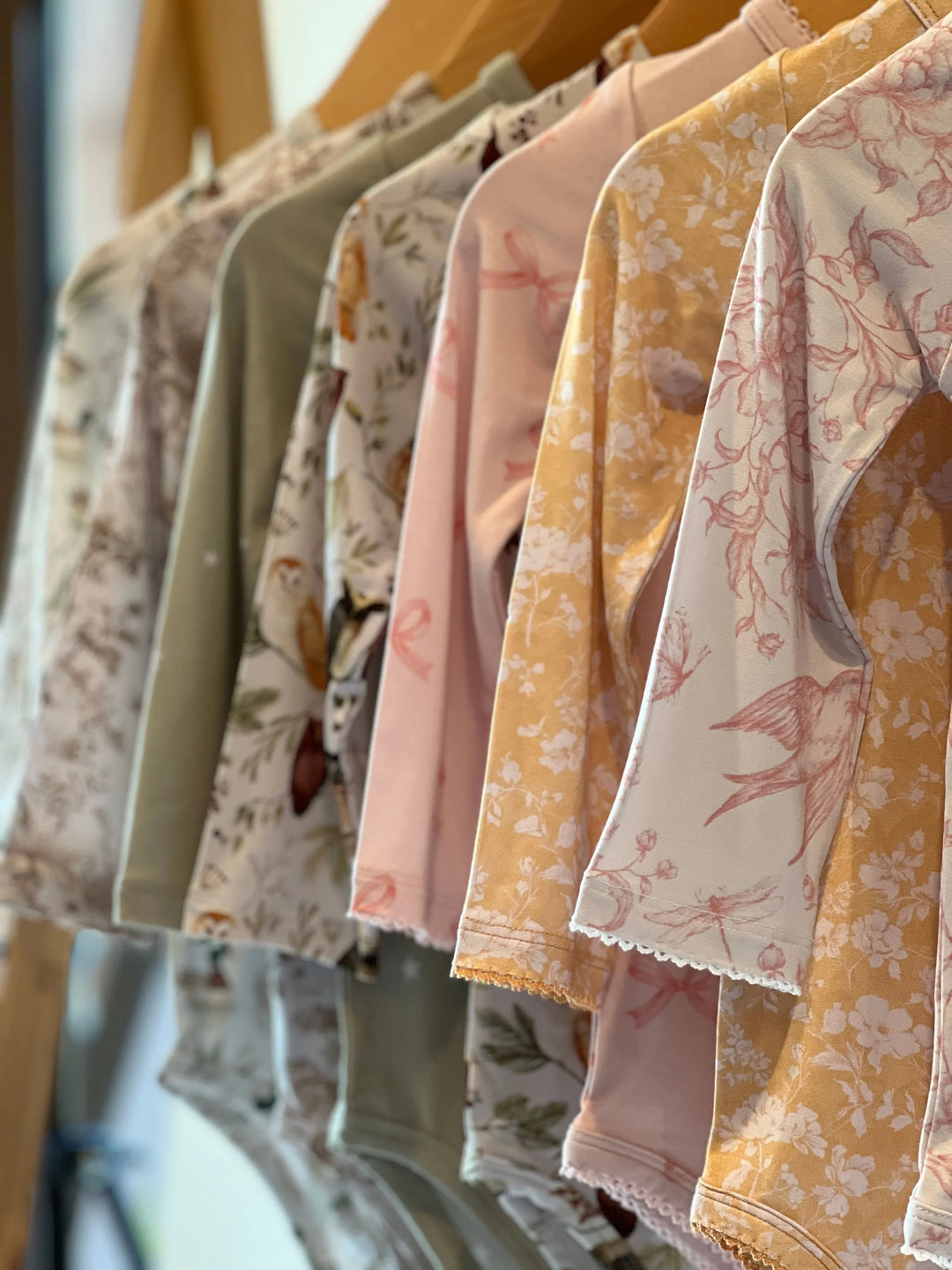How to Dress Your Newborn Baby in Winter Months
Winter brings magical moments, but dressing your newborn baby for the season can be tricky. The problem lies in keeping your little one warm while avoiding overheating. This guide covers everything from layering techniques to must-have winter items, helping you understand how to dress your baby in winter and stay cozy throughout the chilly months.
Understanding How Babies Regulate Temperature
Newborns are more sensitive to temperature changes because their bodies can’t regulate heat as well as adults. Their small size and limited fat stores make them prone to losing body heat quickly. Balancing warmth with breathability is essential to keeping them safe and snug.
Newborns also sweat less efficiently, increasing the risk of overheating if they are overdressed. Parents should keep in mind that room temperature and external weather conditions can significantly impact how many layers a baby needs to maintain a stable body temperature.
Top Tips for Dressing Your Newborn in Winter
Dressing your baby in winter is all about finding the right balance between warmth and comfort. Here are practical tips to ensure your little one stays cozy and safe:
Layering for Warmth Without Overheating
Layering is the best way to keep your baby warm while allowing for adjustments as temperatures change. Start with a soft, breathable base layer like a cotton onesie. Add warmer layers such as a fleece jacket or wool sweater. A final outer layer, like a snowsuit, can provide extra protection when going outside. Remove layers indoors to avoid overheating.
When layering, remember the "plus one" rule — dress your baby in one more layer than you would wear in the same conditions. Always check the back of their neck or chest to ensure they are not too hot or cold.
Choosing the Best Fabrics for Winter Comfort
Soft, breathable fabrics like cotton and bamboo make excellent base layers as they wick moisture away from your baby’s skin. For outer layers, consider fleece or wool, which provide warmth while remaining breathable. Avoid synthetic fabrics that can cause irritation or trap heat.
Natural fibers are suitable for sensitive newborn skin. Bamboo, in particular, is hypoallergenic, eco-friendly, and gentle, making it a top choice for newborn winter clothes.

Essential Winter Items Every Newborn Needs
Stock your baby's wardrobe with baby winter clothes essentials like:
- Beanies and Mittens: Keep their head and hands warm.
- Swaddle Blankets: Use breathable, warm blankets for naps and cuddling.
- Footed Pajamas: Ensure full-body coverage while allowing for movement.
- Car Seat-Safe Blankets: Choose thin but warm blankets that don’t interfere with car seat straps.
- Thermal Socks and Booties: Prevent tiny toes from getting cold.
Consider investing in a quality sleep sack for nighttime, providing warmth without the risk of loose blankets.
Tips for Outdoor Winter Activities with Your Newborn
When taking your baby outdoors during winter months, dress them in layers, including a warm snowsuit, and use a stroller cover for added protection. Be mindful of cold weather conditions like wind chill and avoid prolonged exposure to extreme temperatures. Keep an extra blanket handy for unexpected temperature changes.
When using a baby carrier, dress your baby warmly but avoid overly bulky layers to ensure a snug fit. Your body heat will also help keep your baby warm during outdoor walks.
Maintaining a Comfortable Indoor Environment
Shifting from outdoors to inside can cause your baby to overheat if not done properly. Dress your newborn in breathable layers that are easy to adjust. Consider using a humidifier to prevent dry skin caused by dry winter air.
Ensure the baby’s sleeping area is warm but not too hot. A room temperature between 68-72°F (20-22°C) is generally recommended for safe and comfortable sleep.

Monitoring Your Baby’s Temperature
Check your baby’s warmth by feeling their chest or back — their hands and feet can feel cool even when they’re warm enough. Look for signs like flushed cheeks or sweating, which could indicate overheating. If they seem chilly, add an extra layer or cuddle them in a warm blanket.
Additionally, pay attention to how your baby acts. If they are unusually fussy, lethargic, or seem uncomfortable, adjust their clothing or environment to make baby more comfortable.
Enjoy the Winter Moments Comfortably
Dressing your newborn for winter doesn’t have to be overly complicated! Focus on layering breathable fabrics, investing in essential winter baby clothes, and adjusting clothing based on indoor and outdoor conditions. With these tips, you’ll keep your baby warm, safe, and comfortable all winter long, ensuring a season full of cozy and joyful memories.
Remember that every baby is different, so stay attentive to your little one’s comfort and adjust their clothing as needed. With the right preparation, you and your baby can enjoy winter’s special moments together.




